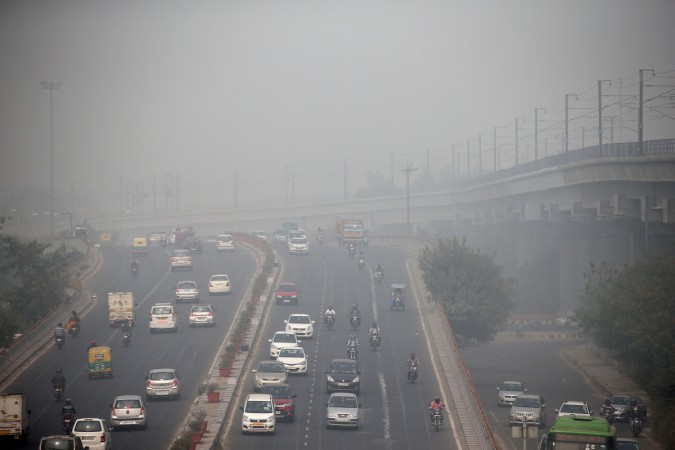In a recent study by IQ Air Visual and Greenpeace, Delhi’s National Capital Region (NCR) has emerged as the most polluted in the world, with five cities neighbouring Delhi, Gurugram, Ghaziabad, Faridabad, Noida and Bhiwadi ranking the highest. Among the top 20 most polluted cities, 18 were in India, Pakistan and Bangladesh, marking the South Asian region as a global pollution hotspot. While Delhi ranked 11, China’s efforts to bring its PM2.5 levels down by 40% since 2013 resulted in Beijing ranking 122. The study further added that Beijing would have ranked 21 if the PM concentrations had remained the same as in 2013.
Study: Stubble burning main contributor of Delhi’s deadly air
Crop burning is the main culprit of Delhi’s killer air – that’s the conclusion of a joint study by Sweden and India. The analysis of 2011 data on biomass burning says black carbon (BC), which is released in the air from the burning of crop residue, is the main contributor to Delhi’s polluted winter air. According to the study, burning of biomass and vehicular emissions, both contribute to around 40% each to pollution in Delhi. The research points out that in Chinese megacities, fossil fuel combustion causes around 70% to 80% of pollution. It also says that BC entering Delhi from neighbouring states is around 42% in winter and 36% in autumn.
Meanwhile, India’s Supreme Court has directed the Centre to use part of its Rs75,000 crore National Clean Energy and Environment Fund (NCEEF) to buy Turbo Happy Seeder machines for farmers to cut paddy stubble as an alternative to burning it down. Counsel Gopal Shankarnarayanan told the court that the expectation that the farmers would bear the expenses to buy the seeder machines as an alternative to the much cheaper option of burning of stubble was unlikely to succeed, TOI reported.
Up to 66% transport pollution deaths in India associated with diesel
Nearly half (1,81,000) of the premature deaths caused by polluted air in India are from the on-road diesel vehicles, says the the first-ever comprehensive assessment of health impacts of global transport emissions, released by the United States (US)-based International Council of Clean Transportation (ICCT). Times of India reported that although 47% of the deaths were attributed to diesel vehicles, the number went up to as much as 66% in India, Italy, Germany, and France, where diesel engines power a sizeable number of cars. New Delhi ranks sixth among the 100 major urban centres assessed for transport sector-related deaths globally.
Down to Earth reported that “it is worrying that the global health burden of only on-road diesel vehicles is 68% higher than previously estimated for diesel and nitrogen oxide emissions. This estimate now includes the effects of tailpipe PM2.5 as well.”
What Russia’s green snow reveals about the rise of pollution
A regional governor from Russia was forced to shut down a coal processing plant and chrome factories after pictures went viral of the pollution they were releasing in the air. The Cherkasovskaya coal-processing plant refused to filter its coal dust and instead spilled it in atmosphere making the snow turn black, while the waste from chrome factories turned the snow yellow. Futurism reported that pollution levels in the city of Kiselyovsk rose up to double the safety limits. Residents uploaded pictures and videos of horrible snow pollution on social media.
The governor of the Russian region of Kuzbass, Sergei Tsivilyov, told the coal firms, “You are killing yourself and you are killing all your people who work for you and you are also killing everything around you.”
NGT panel inspects ‘polluted’ Singrauli
India’s green court, the National Green Tribunal (NGT), carried out a three-day inspection of the heavily polluted coal district of Singrauli in Madhya Pradesh. Economic Times reported that “industries found polluting the environment may face immediate shutdown based on this panel’s report.”
The whole district is covered in fly ash and dust caused by road transportation of coal. State data shows dangerous levels of fluoride contaminating water sources in 12 districts of Singrauli, which has forced the government to seal hand pumps and make alternative arrangements for drinking water. ET quotes sources saying, the state governments of UP and MP have not much to address health-related issues that includes silicosis, fluorosis and mercury contamination, the states have not even prepared health status reports of the affected citizens.
About The Author
You may also like
Bengaluru, Mumbai, Patna With the Highest PM2.5 Emissions From Diesel Generators: Study
Hyperlocal air quality monitoring identifies pollution hotspots in Indian cities: Study
Meat, dairy industry surpasses fossil fuels in methane emissions: Report
Delhi-NCR most polluted region in India, Karnataka the cleanest air in India: Report
Outdoor air quality chronically underfunded, finds State of Global Air report

